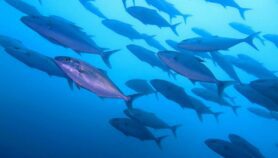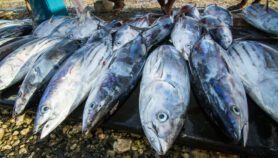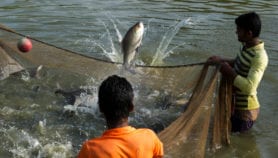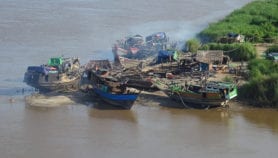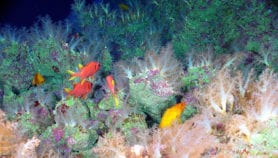31/01/20
Good management can pull fish stocks back from the brink

By: Claudia Caruana
Send to a friend
The details you provide on this page will not be used to send unsolicited email, and will not be sold to a 3rd party. See privacy policy.
[NEW YORK] The finding of a new study that good management can help increase fish stocks could serve as a cue for Asian countries to assess and manage their stocks of a valuable source of food and employment.
Fish account for 20 per cent of animal protein and almost seven per cent of all protein eaten by humans. However, fishing is also recognised as a human activity that has the most widespread impact on the world’s oceans. According to the World Wildlife Fund (WWF), a third of all fish stocks are overfished, with some species on the brink of extinction.
“We do know that the fishing effort in Asia has grown rapidly in the last 40 years, and unlike in Europe and the Americas, it has not declined in the last 15 years as fisheries management started to get more intensive”
Ray Hilborn, University of Washington
In the new study, published this month (January) in the journal PNAS, it estimates that about half of the world’s fish stocks are increasing as a result of effective management. Over 880 fish stocks are included in the database, giving it a much more comprehensive picture worldwide of the health of fish populations. The study, though, was unable to assess fish stocks in most Asian countries for lack of data.
Ray Hilborn, lead study author and professor at the School of Aquatic and Fishery Sciences, University of Washington, Seattle, explains that many Asian countries “don't do the kind of data collection and management common in Europe, the Americas, New Zealand, Australia and South Africa”.
“We do know that the fishing effort in Asia has grown rapidly in the last 40 years, and unlike in Europe and the Americas, it has not declined in the last 15 years as fisheries management started to get more intensive,” says Hilborn.
Hilborn says that outside of Japan, fisheries management has “not been intense” in terms of scientific data collection, analysis and regulation. “India has perhaps the strongest science programme but has almost no enforcement of regulations. China is rapidly increasing its capacity and exploring more intense management. Indonesia and Thailand have taken significant steps but are starting from a very low level of management.”
Part of the problem, Hilborn believes, is funding because fisheries management is expensive. Another part is lack of scientific capacity and staff familiar with scientific assessment and management of fisheries.
Information sharing is another bugaboo. “Few Asian countries share their fisheries data in the same way that is common in the Europe, Americas and elsewhere. There are exceptions such as Indonesia which is opening up its data rapidly,” says Hilborn.
“Asian fisheries are quite different from the fisheries of Europe and the Americas, in that the catch of fish is very diverse, and an individual net may catch hundreds of species,” Hilborn tells SciDev.Net. “In contrast, advanced countries manage fisheries species by species, which will not work for many Asian (particularly tropical) fisheries.
Fishing pressure needs to be adjusted to the productive capacity of the fish. At present, we suspect that fishing pressure is too high, and China and Thailand have certainly made governmental decisions that it is too high.”
Manuel Barange, director of Fisheries and Aquaculture Policy and Resources Department, FAO, says monitoring of stocks, estimation of biomass for exploited stocks and estimation of fishing pressure is important for Asia because the fish catch is very large, with China, India, Indonesia and Vietnam figuring among the top ten producing countries.Barange stresses that fisheries assessments are expensive. The US National Oceanic and Atmospheric Administration estimates it costs them about US$1.4 million per stock and year to achieve “gold standard” monitoring and management. “So, for a country with, say, 30 stocks they are looking at US$40 million per year.”
However, the most important message in the study is one of optimism, Barange says. “Contrary to public opinion, fish stocks that are subject to evidence-based management measures are not only sustainable but also have been rebuilding over the last 20 years. In other words, fisheries management works, and has been working well over that period of time.”
This piece was produced by SciDev.Net’s Asia & Pacific desk.





